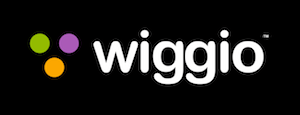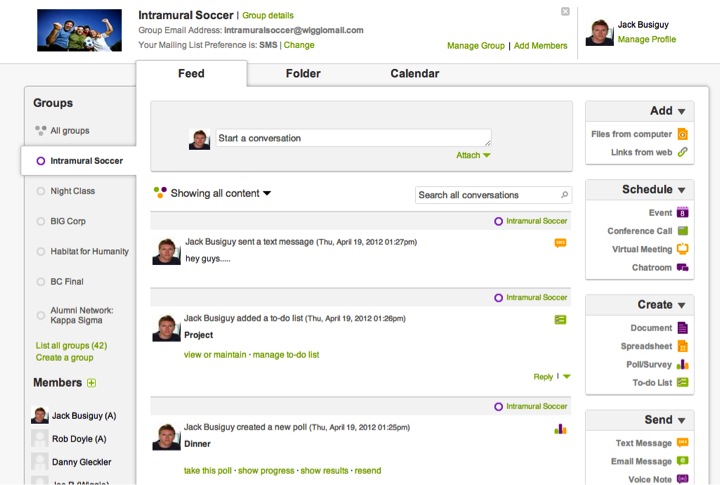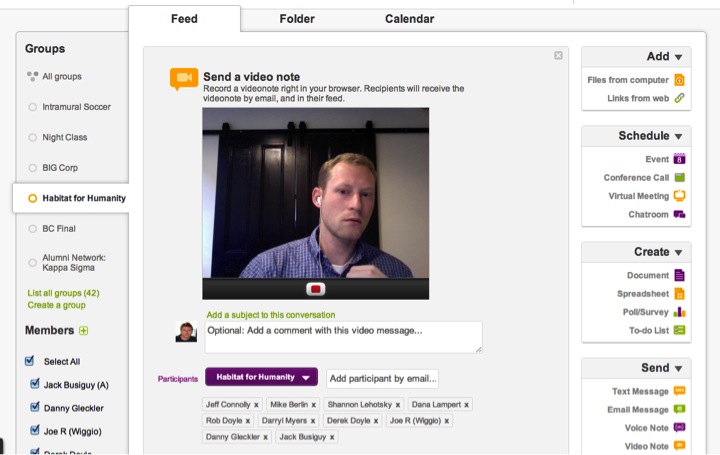Wiggio, an online collaboration service designed for students, has been flying under the radar since raising $2.1 million in funding back in spring of 2010. The company has been slowly and steadily growing its user base, and now reaches over 2,000 universities and 120,000 students groups around the world, as well as several national organizations. Today, the company is also announcing a major milestone: it just hit 1 million users.
In conjunction with this growth news, the platform, which currently offers web conferencing, file sharing, chat, document creation, and more, is now also adding video messaging to its available services. A premium version of Wiggio’s service is entering pilot testing, too.
Founder and CEO Dana Lampert describes Wiggio as the “anti-SharePoint,” explaining that the service has been designed to be dead simple. “If there’s any kind of learning curve involved in getting on a product, it’s going to fail,” he says. “What happens is, if there’s ten people working on a product and eight get it, but two don’t get it, it doesn’t work,” he explains.
And how dead simple is it? Well, for starters, he tests it on 4th graders. Yes, that’s right, Wiggio’s focus group is a bunch of Boston area elementary school students. If they can figure out a new feature, then it’s ready to go. If they get confused, then Wiggio makes adjustments until it’s even easier to use.
Today, the collaboration platform offers the kind of services that companies like Box, WebEx, Yammer, Google Docs and Basecamp now provide, but all under one roof.
There’s also a heavy focus on mobile, says Lampert, which is why the company has designed the product to include several mobile-friendly features like support for SMS and email. For example, one of the service’s more popular features, a listserv tool, is text-messaging enabled, allowing students to receive every post as an SMS text. In addition, the native iPhone application is now being used by 45,000 Wiggio users, and the Android version will arrive in just a few months.
The platform mainly addresses two types of users: the more academic-focused groups like those formed for class projects, study groups, labs, etc. and the student organizations, like sports teams, clubs, and fraternities or sororities. Each student is typically in around three groups, Lampert tells us, as they’re first invited in to join one group, then ending up joining a couple of others once involved. Engagement is also decent, with average session times at 14 minutes and users returning three times per week to contribute content.
As noted above, Wiggio has 2,000 schools now using the software, 600 of which are showing “significant usage,” says Lampert. Not all of Wiggio’s usage is in schools, however, but schools form the majority (80%) of the user base. The company is now seeing some high schools come online, too. Currently, a few notable customers include Harvard University Extension, Habitat for Humanity, Science Olympiad, University of Memphis, and the U.S. Tennis Association.
Recently, the company began piloting its first paid offering, a premium version that allows customers to customize Wiggio with their own branding, while also offering backend analytics surrounding usage. For now, pricing is being handled on a case-by-case basis, but the eventual plan is to charge somewhere around $5-$10 per seat/per year for this version.
Also new is a video blasting feature powered by Tokbox, which allows users to send out video messages to groups which others can respond to by voice, audio or text.
Future plans under consideration (based on user feedback) involve deeper integrations with learning management systems like Blackboard and Moodle, support for single sign-on, and the ability for schools to self-host their own installations.
Wiggio, now a team of eight, is also actively hiring developers, especially in mobile. The plan is to roll out a native iPad app after the Android one goes live. Wiggio is also in need of mobile optimization to make the site work in mobile browsers – parts of the service uses Flash, and the goal is to shift to HTML5 to be more mobile-friendly.
The startup was founded in 2008, after being born out of Cornell University class project. In May 2010, the company raised $2.1 million in Series A financing, led by New Atlantic Ventures, bringing total funding to $2.55 million.


